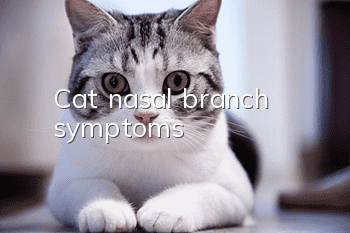Cat nasal branch symptoms

In the early stage of cat nasal branch, respiratory symptoms are mainly the main symptoms. Such as sneezing, runny nose, cough, increased eye secretions, and red conjunctiva. At the same time, it is also accompanied by symptoms such as loss of appetite and depression, and the cat’s body temperature will also increase accordingly.
Feline rhinophyma virus can multiply in the epithelial cells of the cat's nasal cavity, throat, organs, conjunctiva and tongue, and is excreted out of the body with its secretions.
As the disease progresses, the cat’s secretions will increase and change from serous to purulent. Cats with low resistance may die. Try to detect and treat this disease early, otherwise the symptoms will become more serious.
Treatment methods for cat nasal branch:
Because it is contagious, cats suffering from this disease need to be kept in isolation. Selective use of antibiotics, combined with injections to inhibit viral replication, can help cats improve their own immunity.
For eye inflammation, you can give the cat anti-inflammatory eye drops, 2 to 3 times a day, 1 to 2 drops at a time. If the cat is still accompanied by severe coughing, you can feed the cat loquat syrup.
Finally, during the period when the cat suffers from feline nasal congestion, it is necessary to strengthen nutrition and feed it some delicious food and nutritional paste.
- How to solve the problem of cats peeing indiscriminately?
- 10 Tips for Taking Photos of Cats
- What should you pay attention to when using cat hair removal cream? What should you pay attention to when using cat hair removal cream?
- How do Ragdoll cats explode?
- If a cat hasn’t been bathed for several years, what dangerous bacteria could there be?
- Why do mother cats keep licking their babies?
- Can stray cats be raised?
- How to reconcile with a cat that hates you?
- What causes tongue ulcers in kittens?
- What are the advantages and disadvantages of Siamese cats’ personalities?



